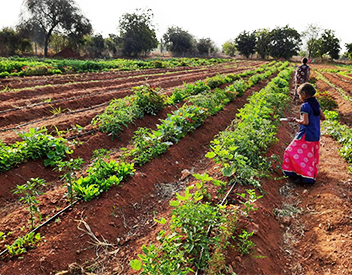Ashramas, or the four stages of life, were not well established in Vedic times. The earliest clear reference to the four Ashramas—that of Brahmachari, or student, Grihastha, or householder; Vanaprastha, or hermit; and Sanyasi, or ascetic—is found in the Jabala Upanishad. The Chandogya Upanishad clearly refers to the first three Ashramas. Full recognition of the fourth stage was done only in the post-vedic period. The later Samhitas refer to the Upanayana, and its description in the Satapatha Brahmana shows that it possessed all the essential features of the sacrament (samskara) elaborately treated in the Grihya Sutras. It was confined to Brahmins, Kshatriyas, and Vaishyas; the sudras were not entitled to the Upanayana. In Vedic times, girls were also sometimes initiated. Since the rite was considered as equal to accomplishing a second birth, members of the three higher varnas were described by the epithet dvija (twice-born). Education used to begin with this Samskara.

Throughout the Vedic period, education was imparted orally and was mainly based on Sruti and Smriti. The list of subjects for study shows a wide range of knowledge, embracing not only the Vedas, Itihasa, Puranas, and grammar but also astronomy, military science, dialetics, and knowledge of portents. The development of character constituted the aim and mortal training, the backbone of the educational system.